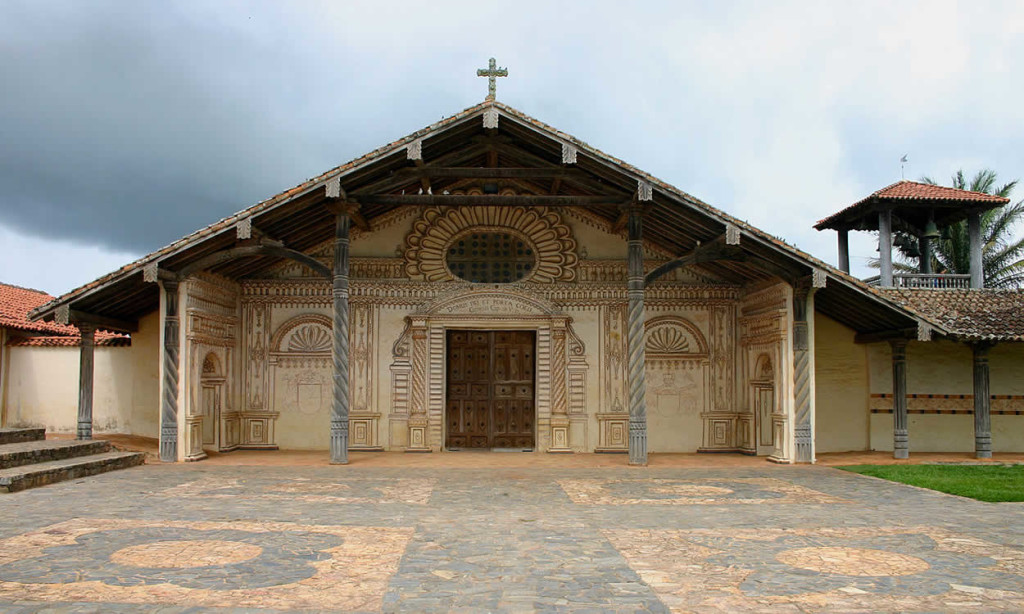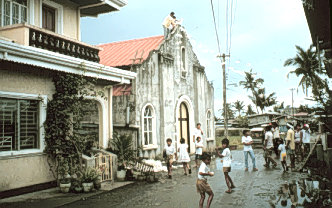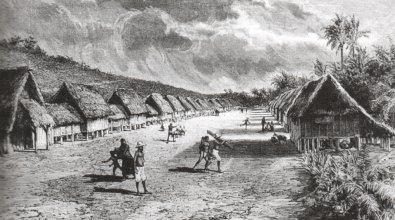05 Feb Cagayan in the mid to Late 1600’s: Reduccion and Insurrection
With the victory of Fr. Pedro de San Agustin, El Padre Capitan, with Datu Salangsang and the Christianized natives in the defense of Cagayan (Cagaiang), the rout of Sultan Kudarat became almost complete. Although Kudarat still launched occasional raids from Maguindanao and Lanao on the outskirts of Cagayan and Camiguin (then called Mambajao Island), these raids lacked the strength in numbers of previous Muslim attacks. In military parlance these are termed as merely nuisance raids with little strategic value.
With the death of Kudarat and the dismantling of his kingdom by his sons, no more raids were conducted from the Muslim tribes. After the victories of 1636, Fr. San Agustin rebuilt and stayed in Cagayan until 1642, after which he was succeeded by a series of other Recollects until the end of the 1600’s. He died in Romblon in 1653.
It should be noted that though this first Battle of Cagayan is of historical noteworthiness, it must not in no way portray Fr. San Agustin, or any Spaniard for that matter, as a hero. San Agustin was naturally doing his work in converting as many natives as he could in the name of the Catholic Church and the Spanish crown. It was only natural that he help defend his flock against the Muslim incursions because in the background of things Cagayan had the potential to become a Reduccion or Reduction Center.
A Spanish Reduccion in the church language is a base of operations for the launching of priests out to the inland areas of Mindanao on missionary expeditions.
A Reduction Center also ensured that it appears on the early Spanish maps since it is also considered as a diocese.
Cagayan was already a diocese even before the turn of the century because it had converted villages as far as Camiguin Island, Iponan, and Tagoloan, and even established vistas (inhabitant centers) as far as Jasaan.
On the side of Kudarat and the Muslims, being the largest kingdom in Mindanao uniting the tribes of Lanao and Maguindanao, it was only natural to consider the Spaniards, and their conversions of natives within the sphere of their kingdom’s influence, as invaders. Aside from this fact, there was also the loss of face by Kudarat for failing to convert the Cagayan natives and its surrounding areas to Islam. The original shamanist religion of its natives strongly resisted Islamic conversion for many centuries, and yet in less than a decade, Himologan, eventually Cagayan, easily converted to Christianity and then refused to continue tribute payments to Kudarat. This political slap on the face to Kudarat was what galvanized the Muslims to take action to take back territory and people they deemed under their rule.
Although there was no separation of church and state during this time, both the Catholic Church and the Spanish crown working together to forge a new colony ensured that the conversion of the natives was also more for purposes of “pacification” rather than true religious faith-based conversion. Christianization assured the Spaniards that the natives would blindly follow their colonial masters because resistance would only lead to excommunication.
This is not to say that there was no resistance to the Spaniards; on the contrary, although many tribes rejoiced on the victories against the Muslims, many resented the way the Spaniards slowly began taking over the natives’ lives. Even though chronicles and records during the periods of the 1600’s to the 1700’s can be scanty at best, enough has survived to show that Cagayan as a Reduction Center was partly responsible for numerous insurrections during these periods.
Insurrections and Rebellions
With the waning of the Muslim power and the increasing numbers of natives all over Mindanao being Christianized, Governor-General Fajardo in Manila issued an edict ordering the compulsory drafting of able bodied males from Mindanao to work in the galleon shipyards of Luzon. This unjustified labor conscription separated many families and it is well recorded that thousands died in those shipyards because the working conditions were nothing more than slave labor standards. Likewise, many widowed young women in Mindanao would become the continuous supply of “harems” for the Spanish priests and other officials who found these mistresses more than willing to give up their bodies for the sake of economic survival for their children. Under these circumstances, insurrections and rebellions were sure to fester.
One of the first village datus to revolt was Sumuroy, but this small insurrection was easily put down. This was followed by a revolt by a Manobo chieftain named Dabao in Linao (Bunawan), an inland village some distance from Butuan Bay. This revolt successfully killed the parish priest in 1649. Dabao then launched a raid on Cagayan intent on killing the parish priest there. The priest was able to escape, and so in reprisal the village was burned, including the church.
Around 1651 some rebellions occurred in Iligan and Camiguin due to the church’s reaction to the natives fusing the Catholic faith with the native’s shamanist practices. In Cagayan itself a female native named Salud (from whom the Salud family lineage would come from) led an insurrection to re-establish the shamanist religions of the past and set up a small fortress in the hilly forests of what is now Indahag. When the Cagayan parish priest at that time, Fr. Francisco de la Madre de Dios, learned of this, he led a campaign to stamp this rebellion. Madre de Dios tried to convince Salud to come back to the Catholic fold. When she refused, her fortress was attacked and destroyed, and Salud and her son were taken prisoner.
As if to punctuate all of this, Muslim tribes in Lanao and Maguindanao again began raiding and destroying settlements around Camiguin, Cagayan, Tagoloan, Butuan, and Surigao. These raids were very violent and intense in the number of people killed, the razed villages, and the plunder sought by the raiders. To counter these raids, the Spanish crown sent a fleet of six galleons with marines and set up anchorage in Iligan. Although intermittent raids still occurred, the Muslims were finally checked by this fleet. 1754 saw the last Muslim raids to occur in Iponan, Tagoloan, and Iligan, but the Muslims were again checked and driven out by additional Spanish ships and troops from Cebu.
Indirect origins of the Guardia Civil
By this the Spaniards found that they could train and rely on a large force of conscripted native Christians to fight the Muslim raids in the absence, or in support of, Spanish troops. This Christian native force was trained and armed in the same manner as similar Christian native forces in Luzon and Cebu. After many decades of this practice, these native forces would eventually become the origins of the Guardia Civil that would be organized in a later century.





No Comments